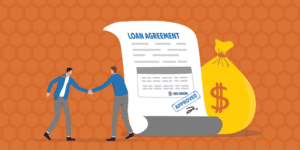Your business needs a loan. Maybe you are just getting off the ground or needing capital to fuel an expansion opportunity or fund your next big project while waiting for customers to pay their invoices. Whatever the reason, you will need to make a good impression to have a shot at a traditional bank loan. Lenders often receive more applications than they can fund. Before they give you money, they’ll want assurances that you have a detailed plan for how to use it — and how you will pay them back. Business lenders will evaluate your personal financial history, credit scores, and business bank statements to assess your financial health and reliability.
What Information Do I Need to Apply for a Business Loan?
Banks and other traditional lenders will request a lot of information when processing your loan. Financial documents are crucial in the loan application process as they provide essential quantitative data. Some documentation is necessary and is relatively easy to produce, including:
- Your personal and business credit score (and any business partners owning more than 20% of your firm).
- A list of assets and potential collateral.
- Bank statements.
- Company tax returns.
- Your Employer Identification Number (EIN) or Social Security Number (SSN).
- Your current debts.
- Your accounts payable and accounts receivable details.
- Your personal financial information.
- A lean startup plan.
- A traditional business plan.
A traditional business plan is often a lengthy and detailed report; however, a streamlined version called a lean startup plan will sometimes suffice for your loan application.
Elements of a Traditional Business Plan
The length of your business plan will hinge on the complexity of your operations and the information you are striving to convey. As a business owner, your responsibilities and decisions play a crucial role in shaping a well-prepared business plan. Yet most reports average around 15-25 pages and include the following sections:
Lenders review both personal and business credit scores to evaluate an applicant’s financial reliability. Therefore, your personal credit history is a significant factor in the loan application process.
Executive Summary
On the first or second page of your business plan, provide a concise introduction of yourself, your company, and the industry in which you operate. You should also include details including where you are located, how long you’ve been in business, and what good or service you provide. If a business fails, it can impact the owner’s ability to repay loans, leading to stricter loan qualifications for newer businesses.
Company Description and Strategy
Go into more detail about elements that make your business unique, what problems you aim to solve, and why you are poised to succeed. This is also an ideal place to include interesting background information, for example, where you got the idea for your business or what sort of future you envision for your firm.
Industry and Market Analysis
In this section, present the outlook for your industry and describe your target audience. A concrete analysis incorporates statistics and explains why customers will choose you over your competitors.
Organization and Management
Include your business entity’s structure and, if you have staff or management in place, an organizational chart showing each team member’s responsibilities. You can also share staff bios and backgrounds here, highlighting how each person will contribute to your venture’s success.
Service or Product Description
Give additional details about the product or service that you sell. Include applicable copyright or patent info, research and development data, a description of your product’s lifecycle, and a breakdown of how it benefits your customers.
Marketing Strategy
Explain how you attract and retain your customers. This can include your brand messaging and the avenues that you use for advertising.
Financial Projections and Financial Statements
To demonstrate your business’s stability, incorporate charts showing projected profit and loss data, budgets, and sales forecasts. If your business is already established, your income statements, cash flow statements, and balance sheets can be displayed here as well. Including business loans in your financial projections can highlight potential funding sources and their impact on your business’s growth and credit history.
Funding Request
Outline exactly how much money you need and how you plan to spend the funds. You can also request specific terms in this section, like how much time you want the lender to give you to pay back the loan.
The Appendix
At the end of your business plan, attach supporting documents like:
- Letters of incorporation
- Industry studies
- Partnership agreements
- Trademark registrations and patents
- Permits and licenses
- Reference letters
- Product pictures
Lean Startup Plan
If your business is relatively simple or you need to produce a plan quickly, a lean startup business plan may be enough to satisfy your lender’s requirements. It briefly lays out your firm’s essential information in a chart format rather than a lengthy narrative. A lean startup plan can be short — often only one or two pages — but should always include your:
- Value proposition — A clear statement about the unique value you and your product or service bring to the market.
- Key partnerships — Names of suppliers, subcontractors, manufacturers, and any other business you work with to successfully run your company.
- Key activities — What you do that is different from and gives you an advantage over your competitors.
- Key resources — Staff, intellectual property, assets, or capital that you have at your disposal.
- Customer segments — A specific and precise definition of your target audience.
- Channels — How you will reach and communicate with your customers.
- Customer relationships — What the customer experience looks like and how you plan to build a long-term and mutually beneficial relationship.
- Revenue streams — The way that your company makes money, whether through direct sales, advertising space, or recurring fees.
- Cost structure — Whether you focus on minimizing costs or amplifying the value of your product.
Online lenders can provide accessible funding options for startups, often with lower annual revenue requirements and flexible credit score criteria.
The Best Business Financing for Your Company
Detailed business plans are useful for showing traditional lenders why they should invest in your company. Credit unions also play a significant role in providing small business loans, often requiring solid business plans and financial documentation. Keep the above guidelines in mind when writing your plan, but remember — your business is unique, and you need to create a plan to attract the type of financing that works best for you. The Small Business Administration is another important source for loan options, particularly SBA-guaranteed loans that require detailed proposals. If a traditional bank loan is not right for your business, contact our customer services representatives to learn about our alternative funding options like the Finance Logix Business Card. Call +1-877-662-3489 or complete our online form today. Criteria and requirements for obtaining small business loans include personal credit history, business plans, and financial stability.



























